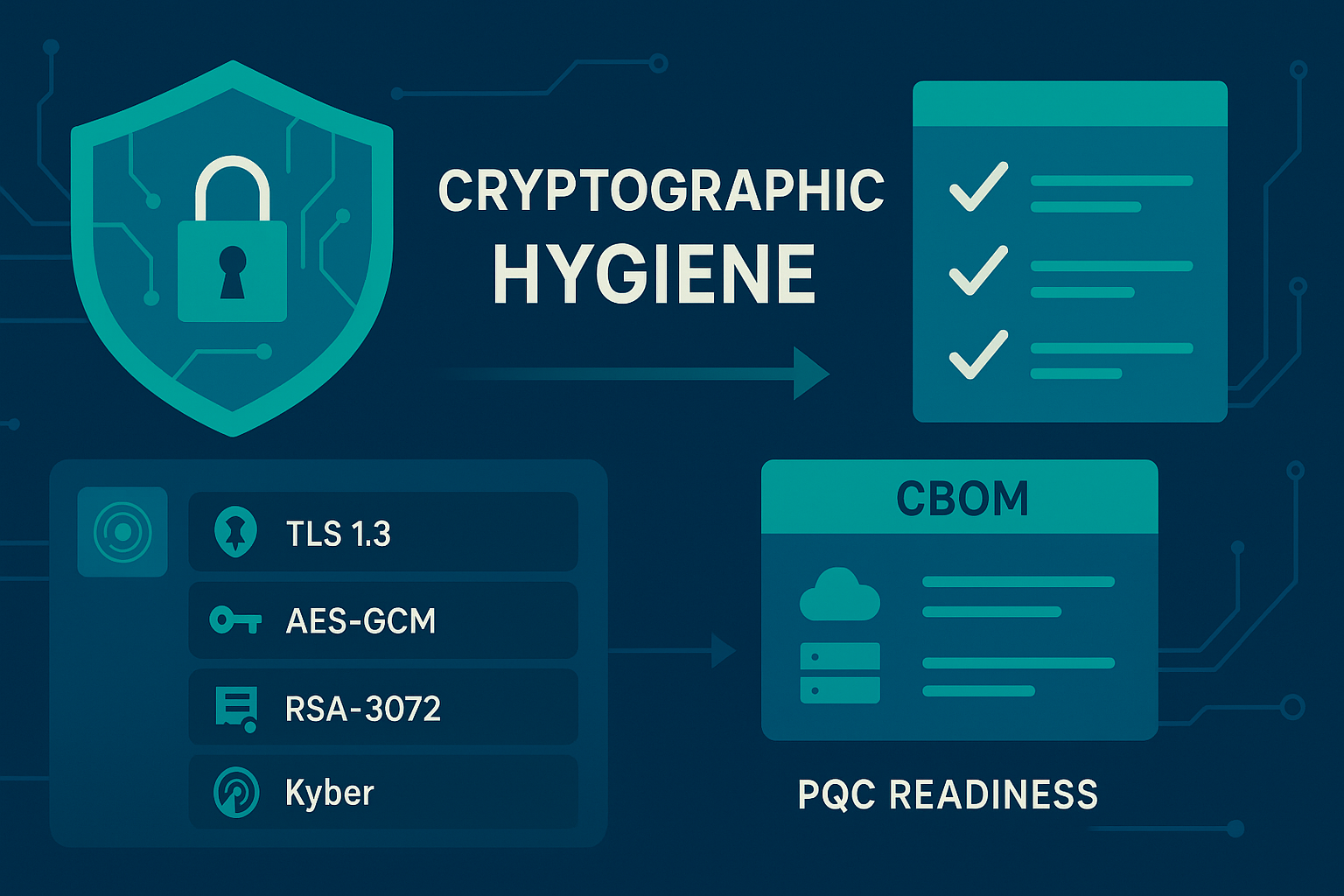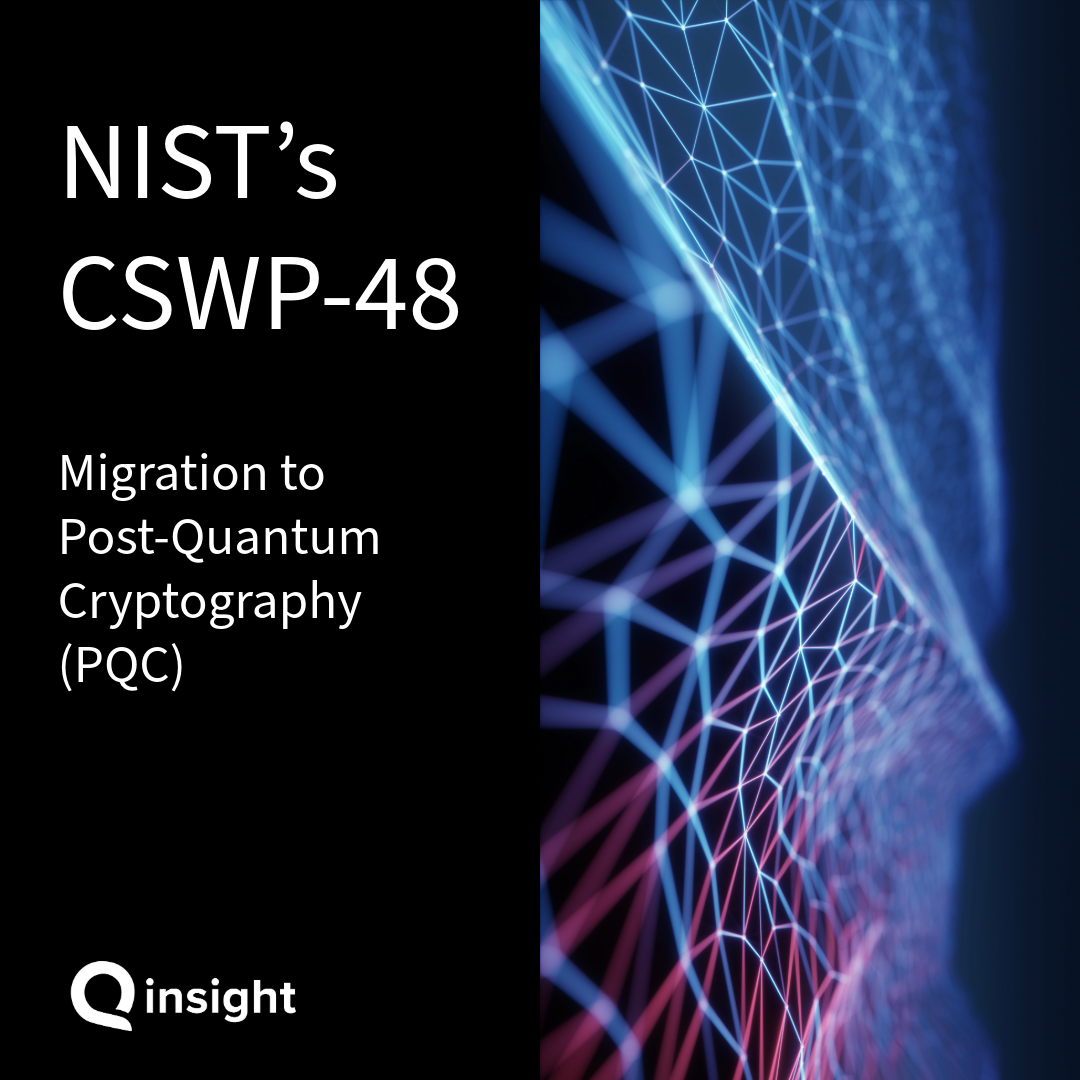Cryptographic Hygiene: Best Practices for Organizations
A pragmatic 2025 playbook for cryptographic hygiene: establish ownership and policy, continuously discover and inventory crypto across your estate, automate key and certificate lifecycl

Good crypto hygiene is the security equivalent of brushing your teeth—simple routines that prevent painful (and expensive) emergencies later. Below is a pragmatic, CISO-friendly guide you can give to engineering, security, and compliance teams to harden cryptography across your estate—cloud, on-prem, SaaS, and edge.
1) Start with governance and ownership
- Name accountable owners for cryptography (security architecture + platform engineering + app teams).
- Define a crypto policy: approved algorithms/parameters, key lengths, rotation periods, certificate issuance rules, exception handling.
- Establish an RFC-style change process for crypto changes (algorithm upgrades, KMS/HSM migrations, PQC pilots).
- Track metrics: % of assets inventoried, certs expiring <30/60/90 days, deprecated algorithms eliminated, rotation SLA conformance.
2) Build complete visibility (discovery + inventory)
- Discover externally and internally: enumerate TLS/SSH, APIs, message queues, data stores, HSMs/KMS, service meshes, containers, serverless, endpoints.
- Fingerprint everything: protocol, cipher suite, key length, certificate chain, curve, hash, library/versions, HSM policies.
- Map data flows: identify where sensitive data is in transit and at rest; link crypto controls to data classification.
- Continuously rescan: treat crypto posture like vuln management—baseline, monitor, and alert on drift.
3) Standardize strong, modern defaults
- Algorithms & parameters
- Transport (TLS): TLS 1.2+ (prefer 1.3), disable NULL/RC4/3DES/MD5/SHA-1; prefer AEAD (GCM/ChaCha20-Poly1305) and strong curves for ECDHE.
- Data at rest: AES-GCM/CTR/XTS with ≥128-bit keys; authenticated modes for integrity.
- Hashes: SHA-256/384; avoid SHA-1 for signatures and integrity.
- Asymmetric: RSA-3072+ or ECDSA with P-256/P-384 (and plan for PQC—see §9).
- Libraries: standardize on vetted crypto libraries; pin versions; apply security patches fast.
- Secure configuration baselines: CIS-style baselines for load balancers, proxies, web servers, databases, and service meshes.
4) Keys first: lifecycle and access
- Centralize keys in a KMS or HSM with enforced policies; avoid app-embedded keys.
- Separation of duties: distinct roles for key creation, approval, and use.
- Rotation & revocation: automate rotations (e.g., 90–365 days by key class); test revocation paths.
- Least privilege: grant applications scoped, time-bound key-use permissions; audit every access.
- Backups: secure, tested backups for keys with dual control; document recovery procedures.
5) Certificates without surprises
- ACME/automated issuance: eliminate manual CSR/issuance/renewal where possible.
- Short-lived certs for internet-facing workloads; track CT logs for impersonation/typosquatting.
- Chain hygiene: enforce complete, correct chains; remove weak/legacy roots; pin where appropriate.
- Expiry management: alert at 90/60/30 days; auto-replace in CI/CD to avoid outages.
6) Secrets management (stop hard-coding)
- Use a secrets manager (cloud-native or third-party) with rotation hooks and dynamic secrets.
- Ban secrets in code: pre-commit hooks, CI scanners, and repo DLP.
- Runtime controls: mount secrets at runtime (env vars/sidecars) with least privilege and short TTLs.
7) Crypto in the SDLC
- Threat model crypto early: identify data sensitivity and crypto needs at design time.
- SAST/DAST/SCA: scan for unsafe crypto use (e.g., ECB mode, weak PRNGs), outdated libraries, and known CVEs.
- Golden templates: provide secure code patterns for encryption, signing, key handling, and TLS verification.
- Gate on posture checks: block deploys if they introduce deprecated ciphers or missing TLS verification.
8) Strong randomness and integrity
- CSPRNGs only: rely on OS/hardware entropy sources (e.g.,
/dev/urandom, platform RNG APIs). - Nonce/IV management: never reuse nonces; rely on library-managed nonces when available.
- Integrity everywhere: prefer authenticated encryption; add signatures for critical artifacts (containers, binaries, configs).
9) Plan for Post-Quantum Cryptography (PQC) now
- Inventory cryptography with algorithm detail to know where RSA/ECC is used and with what key sizes.
- Prioritize migration for long-lived data (HNDL risk): recordings, archives, backups, PII/PHI, IP, government/defense data.
- Adopt crypto-agility: design systems to swap algorithms/keys without redesign (config-driven, versioned crypto profiles).
- Pilot PQC in non-critical paths (e.g., hybrid key exchange in TLS, code signing test environments).
- Track vendor roadmaps for PQC-ready KMS/HSM, libraries, and protocols; plan interop testing.
10) Protect keys with hardware and isolation
- Use HSMs for root and high-value keys (CA, code signing, payment, hardware attestation).
- Leverage enclaves/TEE where appropriate for key-in-use protection.
- Network isolation & mTLS for management planes (KMS/HSM/admin APIs).
11) Monitoring, detection, and response
- Posture monitoring: dashboards for protocol versions, cipher use, cert health, and control drift.
- Detection: alert on weak cipher negotiation, failed certificate validation, expired/soon-to-expire certs, and anomalous key use.
- IR playbooks: include crypto-specific actions—key compromise, CA breach, certificate mis-issuance, algorithm downgrade.
- Tamper-evident logs: sign logs or route to immutable storage; correlate with identity and change events.
12) Third-party & SaaS assurance
- Contractual controls: require strong crypto, rotation SLAs, and PQC roadmaps from vendors.
- Attestations: review SOC 2/ISO reports for key management, HSM use, and crypto change control.
- External surface scans: validate vendor-facing TLS posture and certificate hygiene.
13) Education, drills, and documentation
- Run “crypto days”: red/blue exercises for misconfigurations (e.g., TLS downgrade, expired cert).
- Job aids: one-page cheat sheets with approved ciphers, curves, and library calls.
- Document everything: key hierarchies, rotation timelines, exception registers, PQC migration plans.
A simple cryptographic hygiene checklist
- Owners, policy, and metrics defined
- Continuous discovery of TLS/SSH, data stores, HSM/KMS, libraries
- Strong defaults: TLS 1.3 preferred, AEAD ciphers, SHA-256+
- Centralized KMS/HSM; automated key rotation and revocation
- Automated certificate issuance/renewal; no hard-coded secrets
- SDLC gates for crypto misuse and outdated libs
- PQC inventory and migration roadmap; crypto-agile designs
- Monitoring, alerting, IR runbooks for crypto incidents
- Vendor/SaaS crypto requirements and validation
- Documentation kept current; teams trained
“So what?” for CISOs
- Reduce outage risk by eliminating surprise expirations and brittle manual cert processes.
- Shrink breach blast radius with centralized key control, short-lived credentials, and HSM-backed root keys.
- Accelerate audits with clear policy, metrics, and traceability for keys/certs.
- Future-proof your estate by building crypto-agility and a PQC migration plan before deadlines hit.
- Lower total cost via automation (ACME, rotations, CI/CD checks) and fewer emergency fire drills.
Don’t forget your Cryptographic Bill of Materials (CBOM)
A CBOM is the authoritative inventory of cryptography in your environment—algorithms, key sizes, libraries, certificates, HSM/KMS locations, and where they’re used in apps, services, and data flows. It’s the backbone for everything above: visibility, policy enforcement, rotation, audit readiness, and PQC planning.
Qinsight helps organizations discover, inventory, and maintain a living CBOM, continuously monitoring TLS/SSH, keys, certificates, libraries, and configurations across cloud and on-prem environments—so you can enforce strong defaults today and migrate to post-quantum cryptography with confidence.

Subscribe to our weekly newsletter
Lorem ipsum dolor sit amet consectetur. Lacus id turpis ut nulla dui proin nunc.



.png)